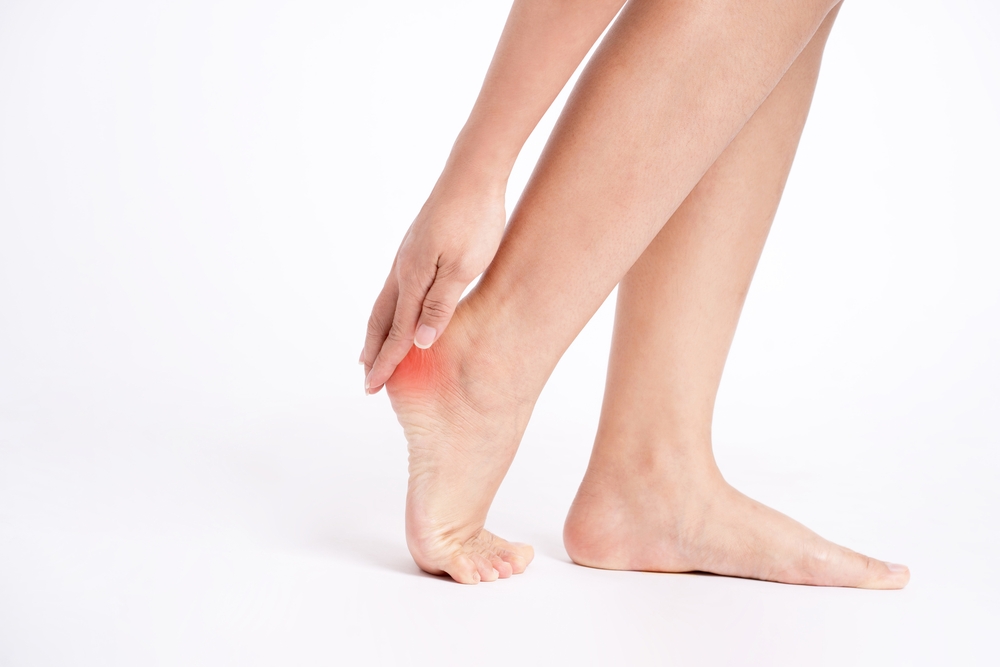Heel pain
Heel pain can be caused by a variety of factors, including injury, overuse, or certain medical conditions. Here are some possible causes of heel pain:
- Plantar fasciitis: This is a common cause of heel pain and occurs when the plantar fascia, a thick band of tissue that runs along the bottom of the foot, becomes inflamed.
- Heel spur: This is a bony growth that forms on the heel bone and can cause pain when it rubs against other structures in the foot.
- Achilles tendonitis: This condition occurs when the Achilles tendon, which connects the calf muscles to the heel bone, becomes inflamed.
- Stress fractures: These are tiny cracks in the bones of the foot or heel that can be caused by repetitive stress, such as running or jumping.
- Tarsal tunnel syndrome: This is a condition in which the tibial nerve, which runs through a narrow passage in the ankle, becomes compressed or irritated.
If you are experiencing heel pain, it is important to see a healthcare provider for an accurate diagnosis and appropriate treatment. Treatment may include rest, ice, physical therapy, orthotics, or medications. In some cases, surgery may be necessary.
physiotherapy treatment
Physiotherapy can be an effective treatment for heel pain, especially in cases of plantar fasciitis, Achilles tendonitis, and other soft tissue injuries. Here are some common physiotherapy treatments for heel pain:
- Stretching exercises: The physiotherapist may recommend specific stretching exercises to improve flexibility and reduce tension in the plantar fascia, Achilles tendon, and calf muscles.
- Massage therapy: This involves using hands-on techniques to help relieve tension and promote healing in the affected area.
- Ultrasound therapy: This involves using high-frequency sound waves to promote blood flow and reduce inflammation in the affected area.
- Taping and strapping: The physiotherapist may use tape or a supportive brace to help support the foot and reduce pain during movement.
- Footwear and orthotics: The physiotherapist may recommend appropriate footwear and/or orthotic inserts to help support the foot and reduce stress on the affected area.
- Gait analysis: The physiotherapist may perform a gait analysis to identify any issues with your walking or running technique that may be contributing to your heel pain.
These physiotherapy treatments can be used alone or in combination with other treatments, such as medication or surgery, depending on the underlying cause of your heel pain. Your physiotherapist will work with you to develop a customized treatment plan based on your specific needs and goals.
orthopedic treatment
Orthopedic treatment can be effective in treating heel pain, especially in cases where conservative treatments such as physiotherapy have not been successful or the condition is more severe. Here are some common orthopedic treatments for heel pain:
- Custom orthotics: These are shoe inserts that are designed specifically for your feet to provide support, cushioning, and improve the alignment of the foot and ankle.
- Steroid injections: These are injections of a corticosteroid medication into the affected area to reduce inflammation and pain.
- Extracorporeal shock wave therapy (ESWT): This involves the use of high-energy shock waves to stimulate healing in the affected area and reduce pain.
- Surgery: In severe cases, surgery may be necessary to correct structural issues or remove bone spurs that are causing the heel pain.
- Immobilization: In some cases, immobilization with a cast or walking boot may be necessary to allow the affected area to heal.
Your orthopedic doctor will work with you to determine the best treatment plan based on the underlying cause of your heel pain and your individual needs and goals. It is important to seek medical attention if you are experiencing severe or persistent heel pain, as early intervention can improve the chances of successful treatment.
chiropractic treatment
Chiropractic treatment can be effective in treating heel pain, especially if the pain is related to musculoskeletal issues such as misalignment or muscle tension. Here are some common chiropractic treatments for heel pain:
- Spinal adjustments: This involves manual manipulation of the spine and other joints in the body to improve alignment and reduce tension and pressure on the affected area.
- Soft tissue therapy: This involves manual manipulation of the soft tissues in the affected area, including massage and stretching, to improve flexibility and reduce tension.
- Instrument-assisted therapy: This involves the use of specialized instruments to apply targeted pressure and vibration to the affected area to promote healing and reduce pain.
- Foot and ankle exercises: The chiropractor may recommend specific exercises to improve strength and flexibility in the foot and ankle, which can help reduce pain and prevent further injury.
- Lifestyle modifications: The chiropractor may recommend modifications to your daily activities or posture to reduce stress on the affected area and improve healing.
It is important to note that chiropractic treatment may not be appropriate for all cases of heel pain, especially those caused by underlying medical conditions. Your chiropractor will work with you to develop a customized treatment plan based on your specific needs and goals. It is also important to seek medical attention if you are experiencing severe or persistent heel pain, as early intervention can improve the chances of successful treatment.
Are you sick of being in Pain? Our amazing team will get you moving PAIN FREE ! BOOK PHYSIOTHERAPY APPOINTMENT NOW https://kure.co.in/physiotherapy/
Physiotherapy and Chiropractor http://eshankaushik.com/
